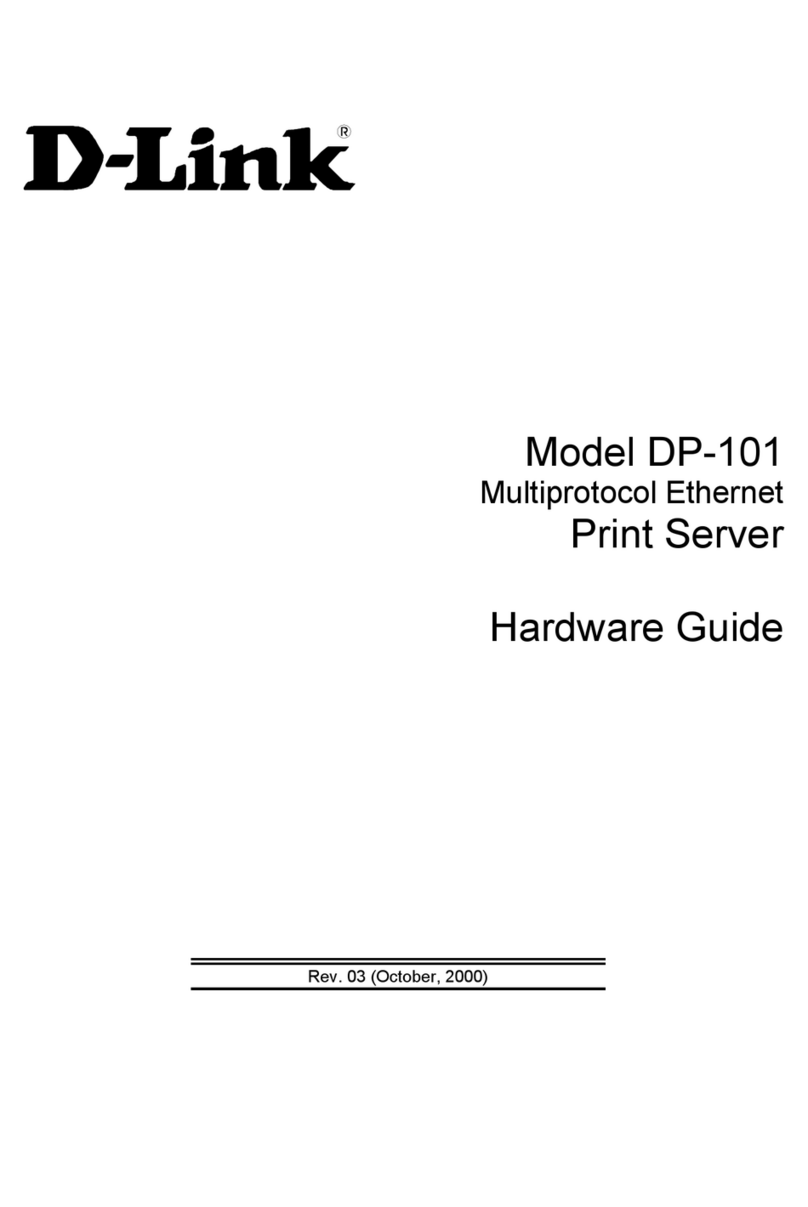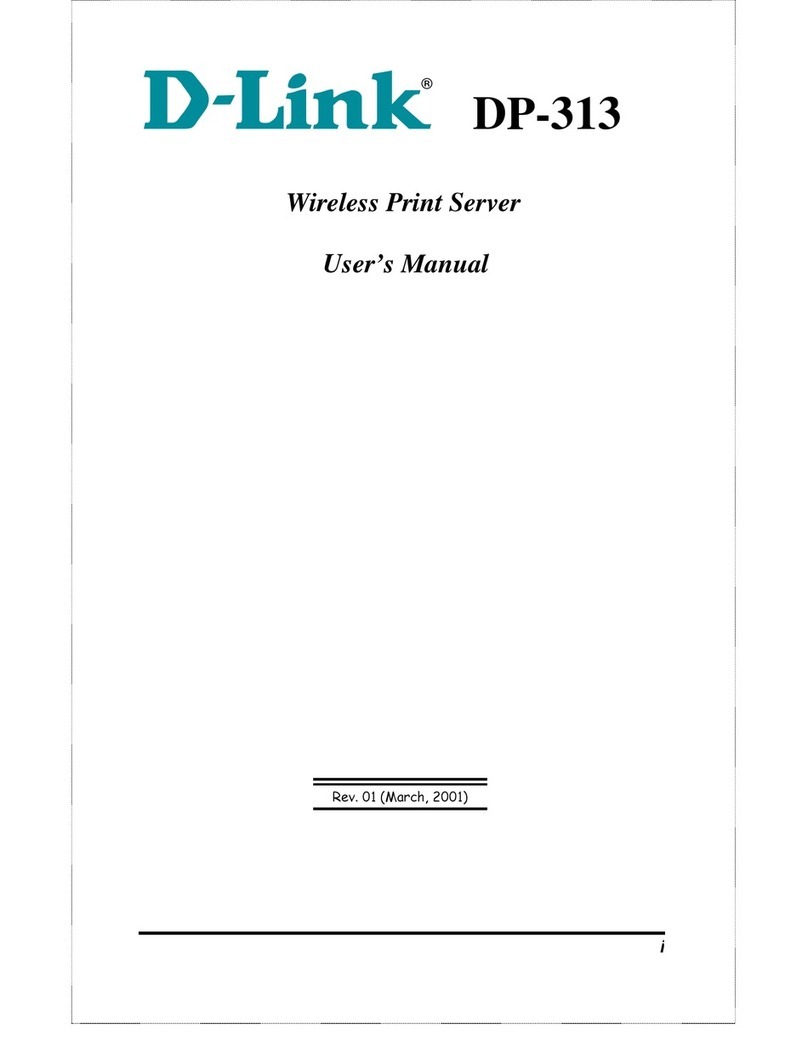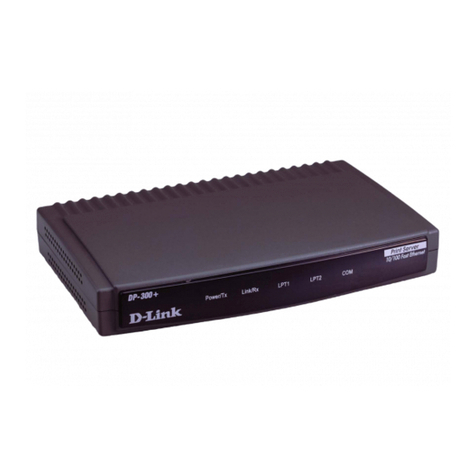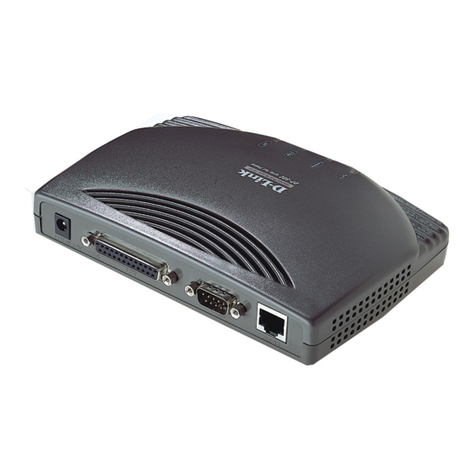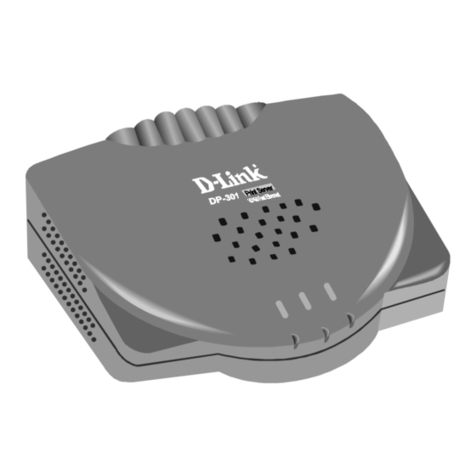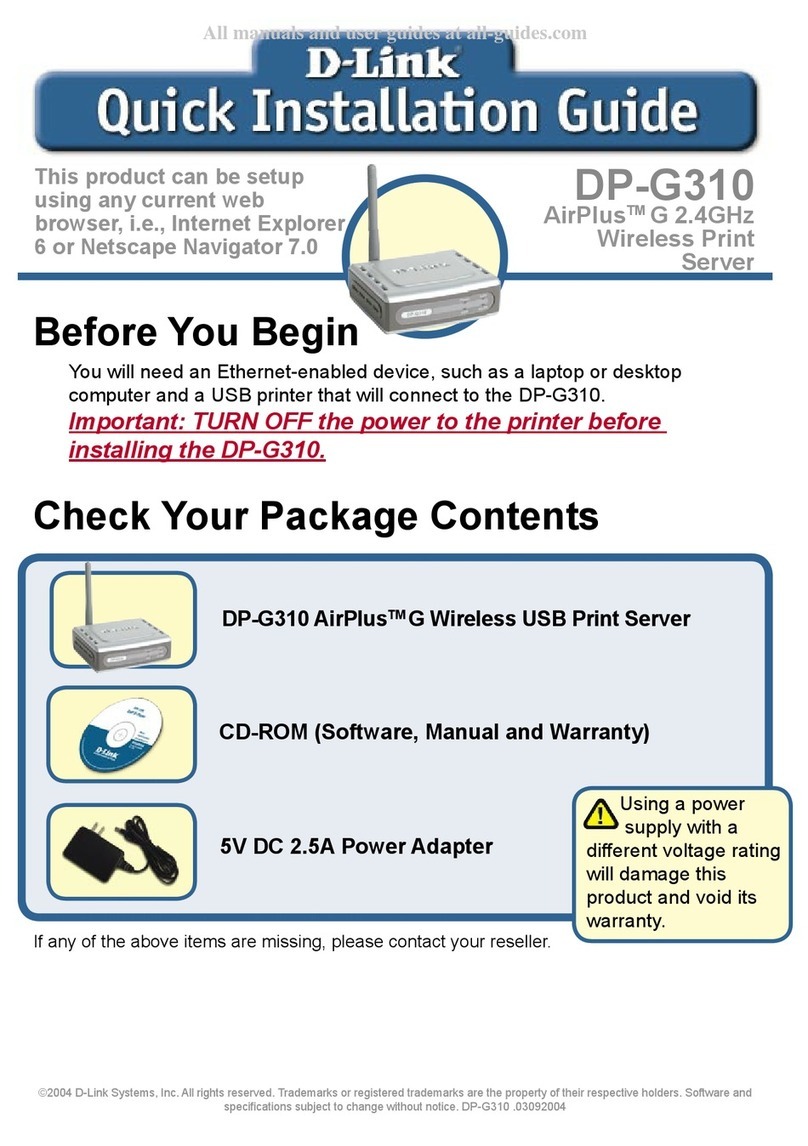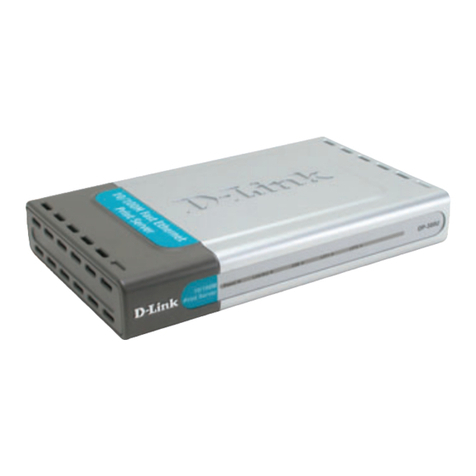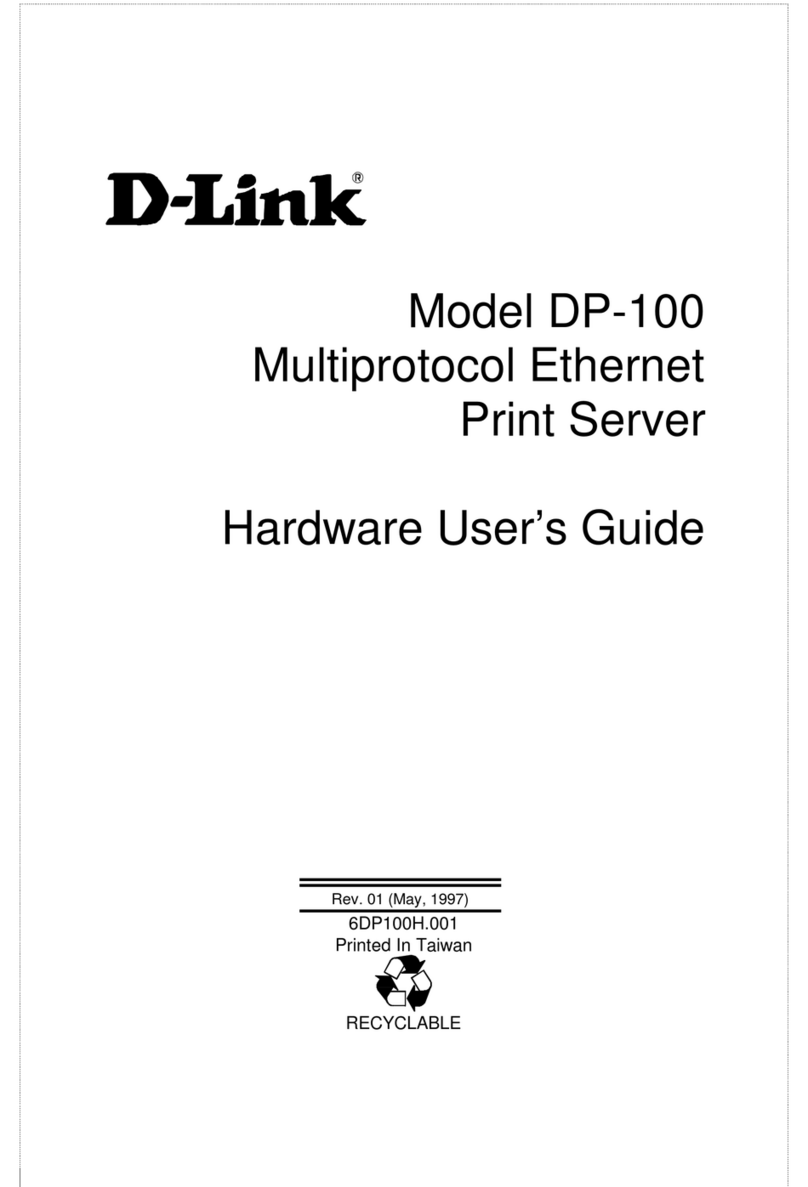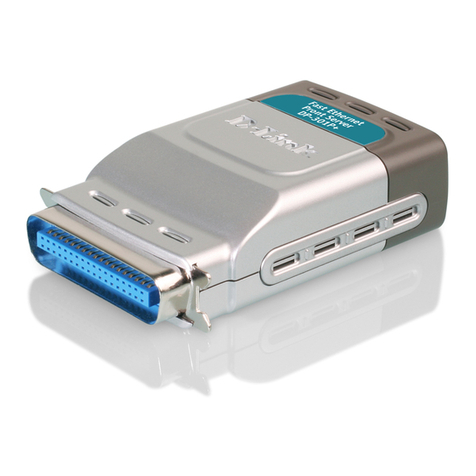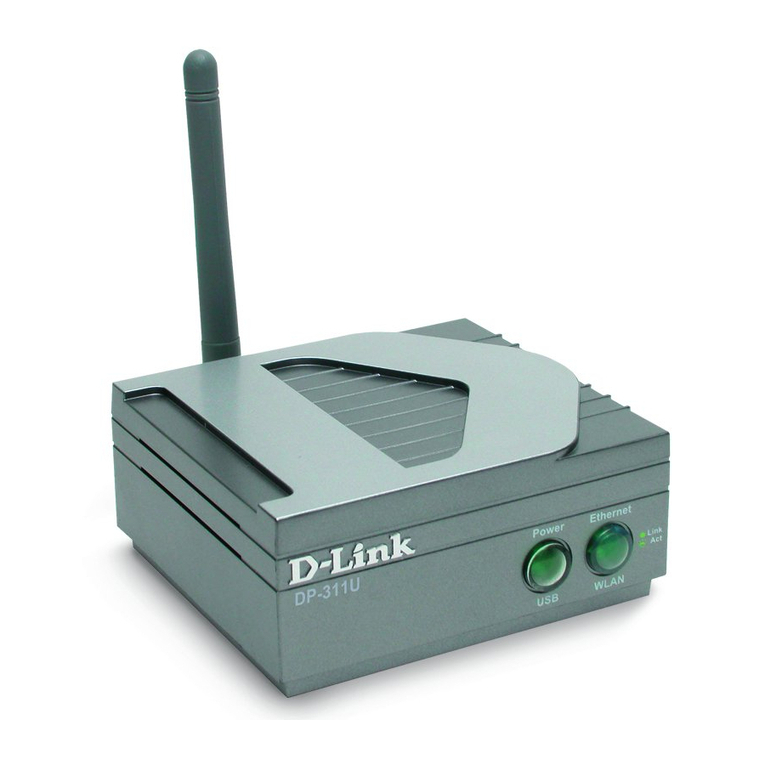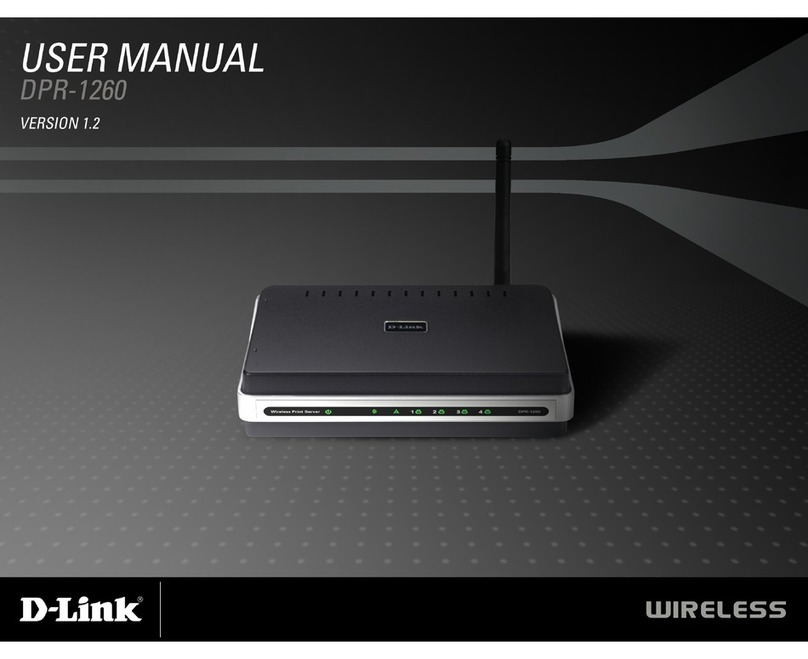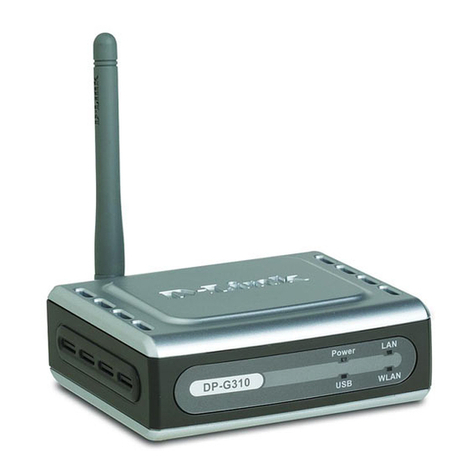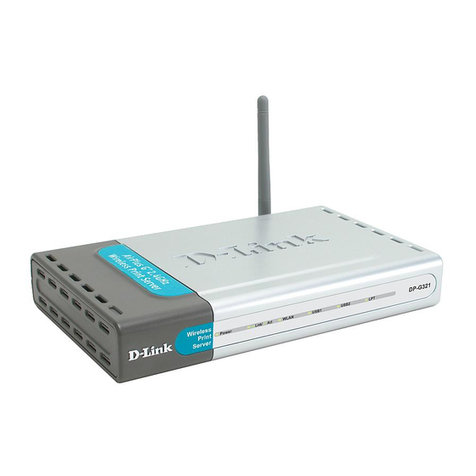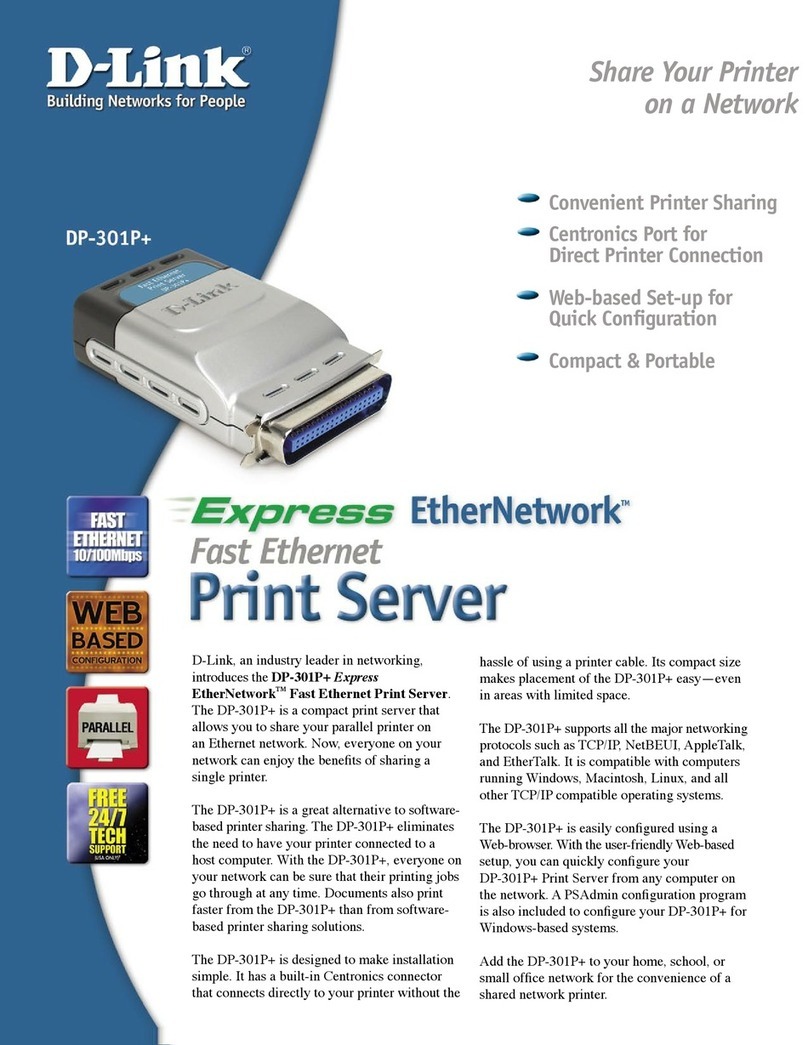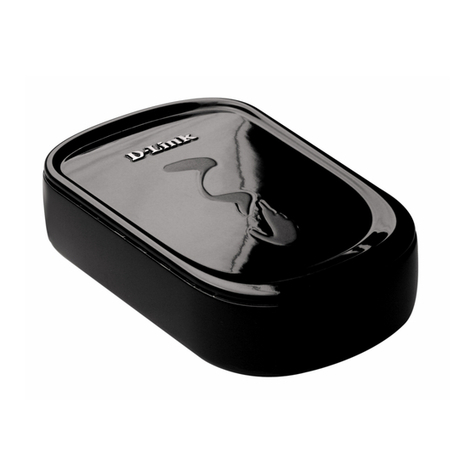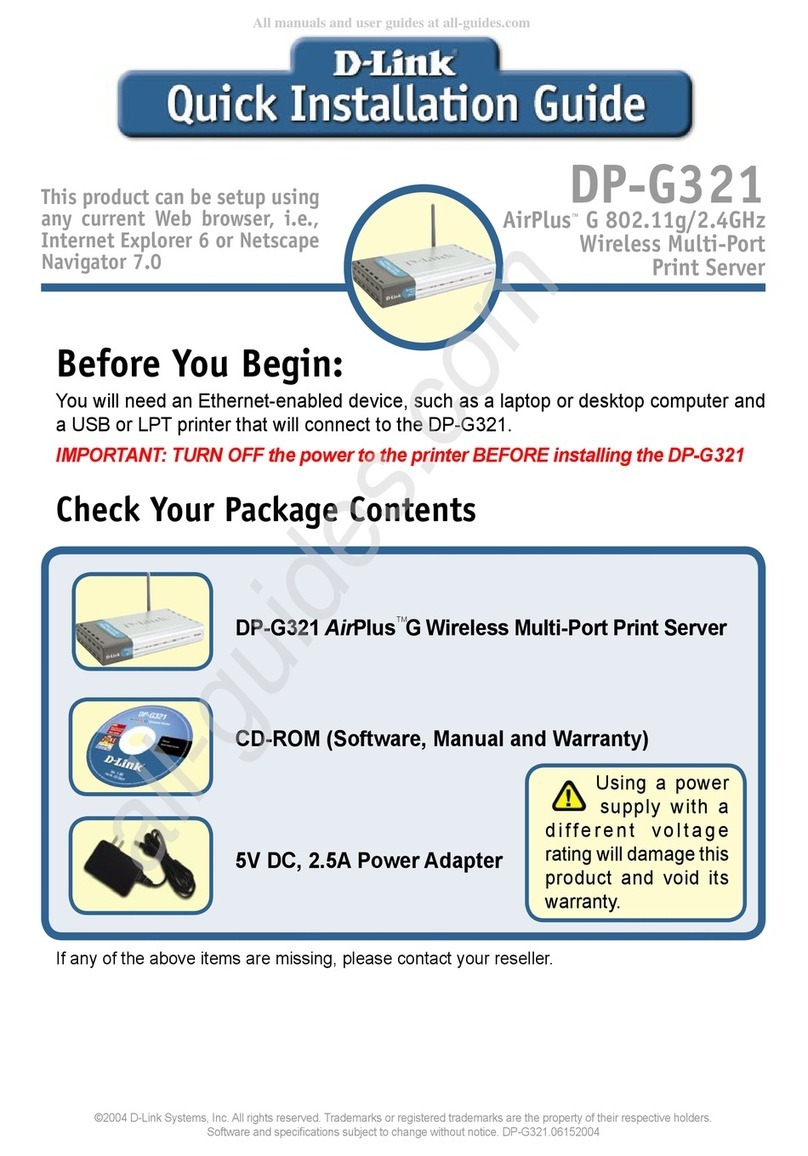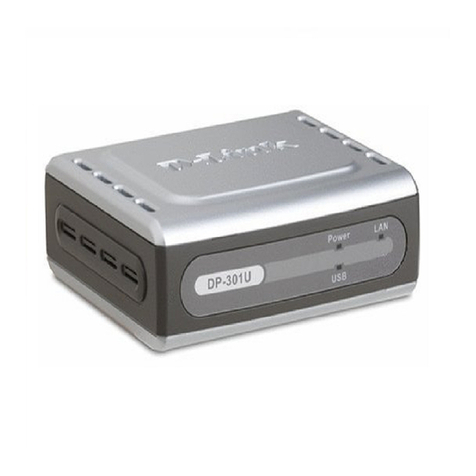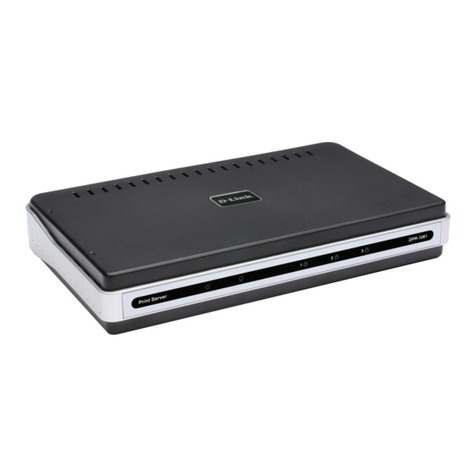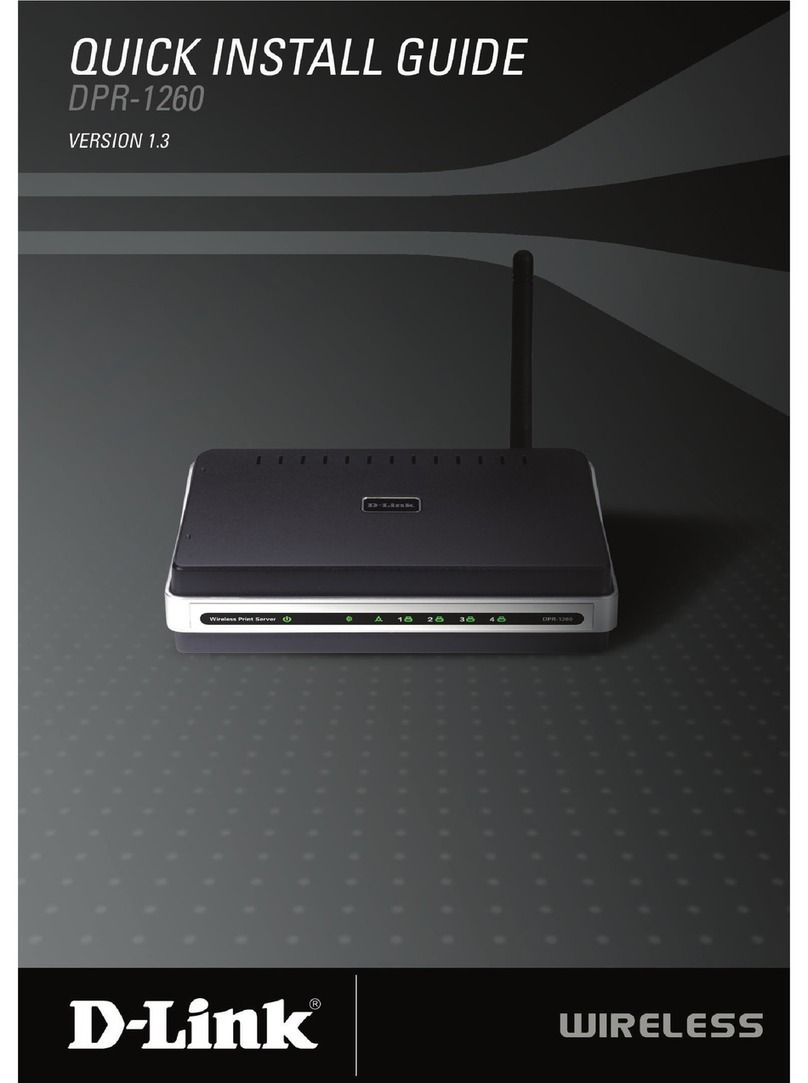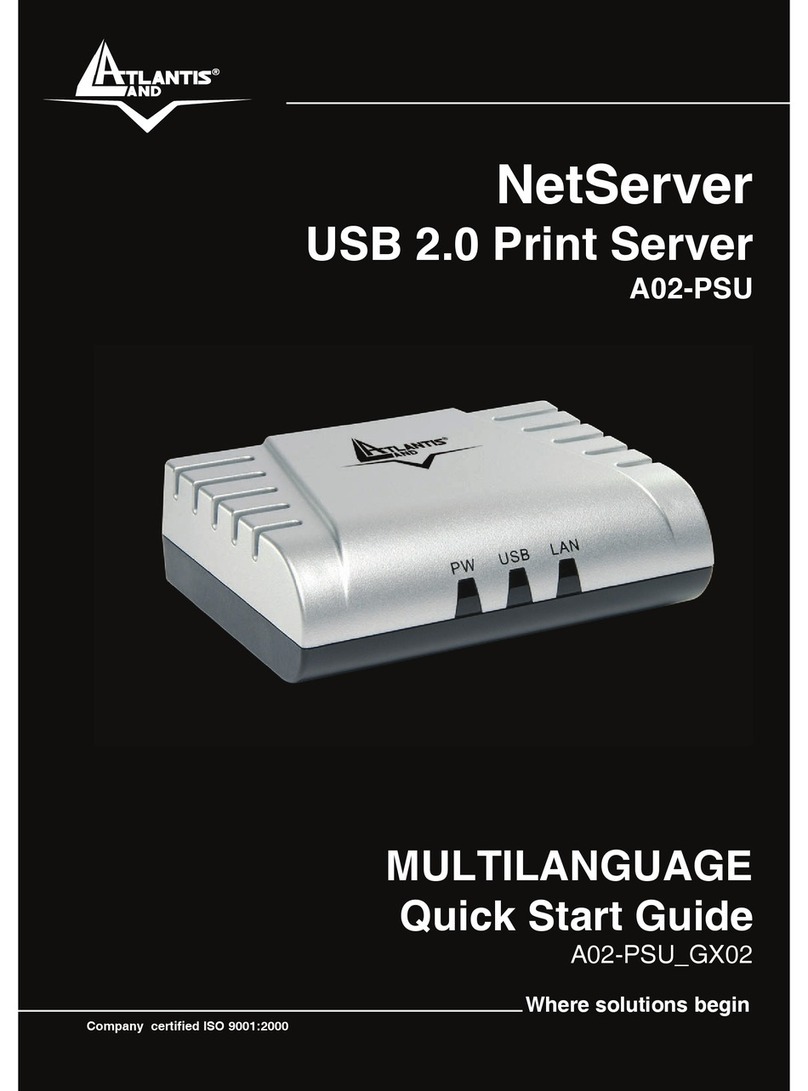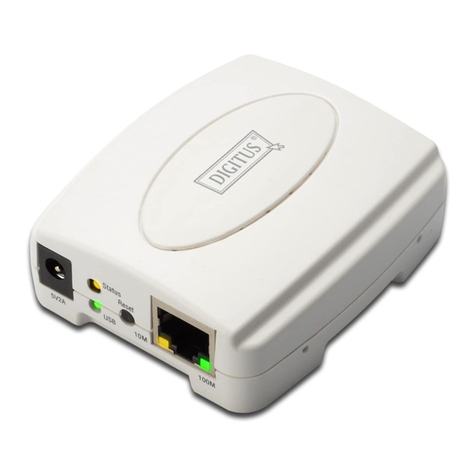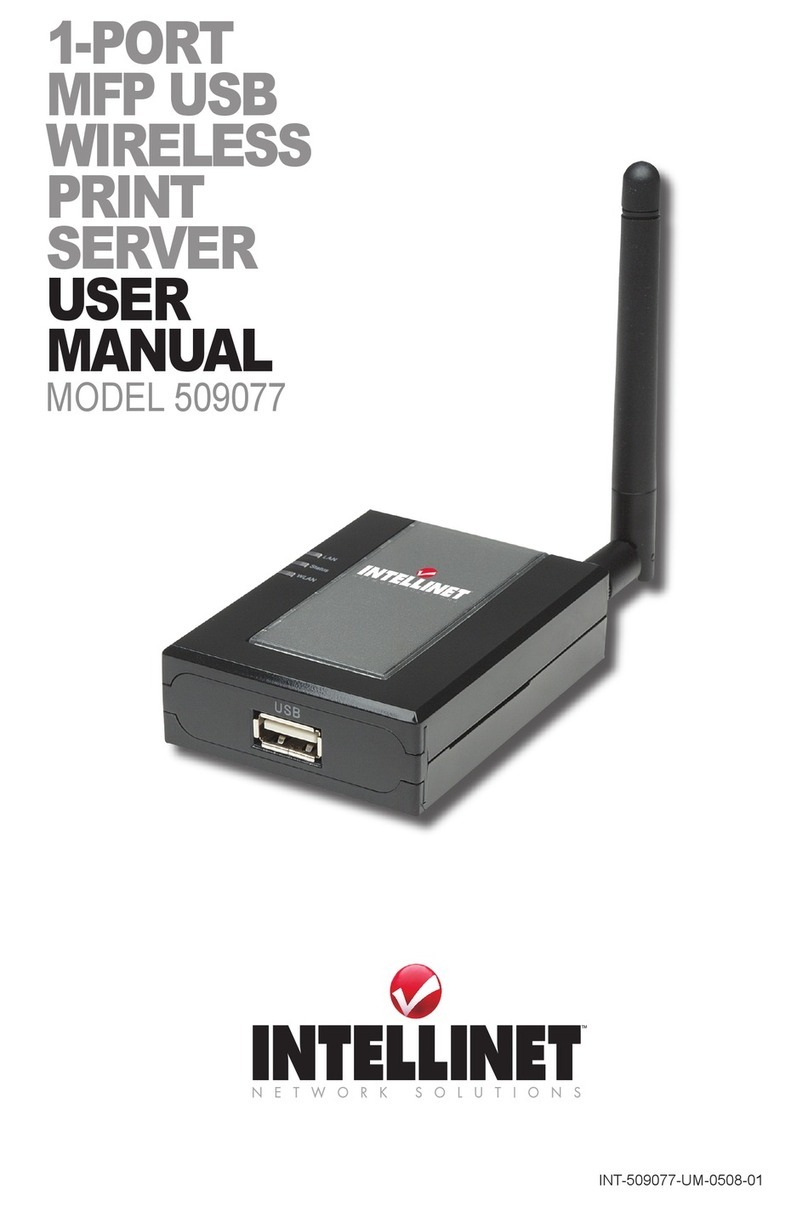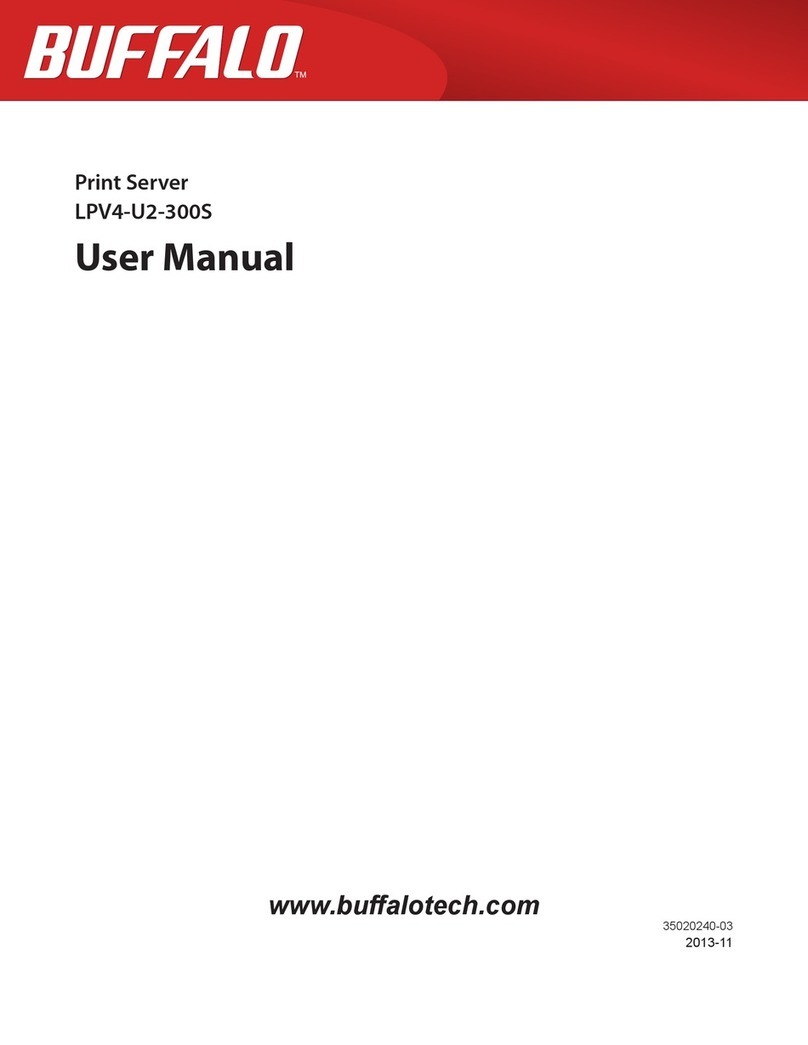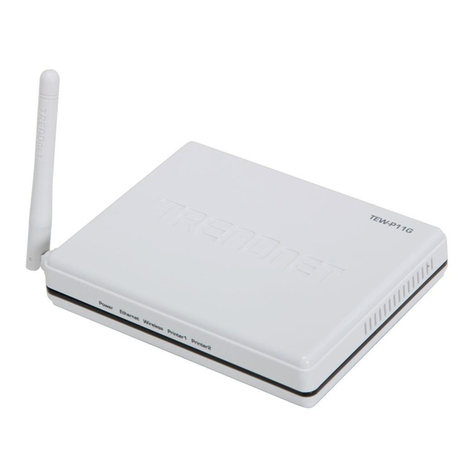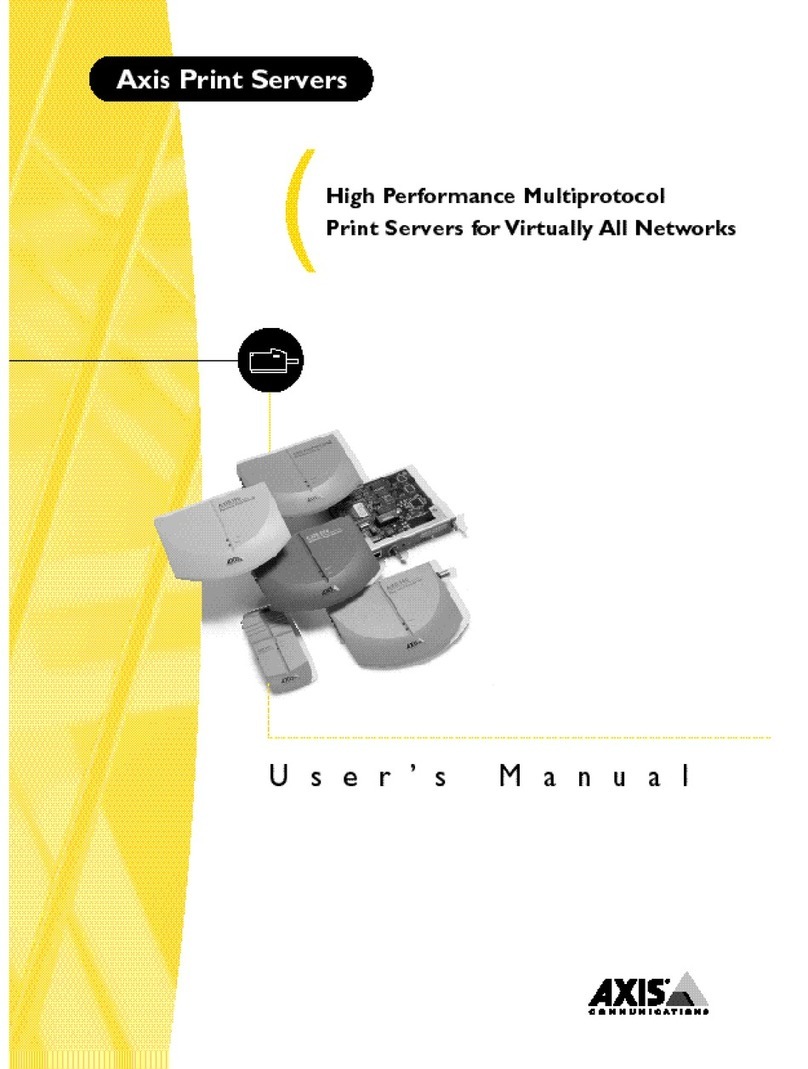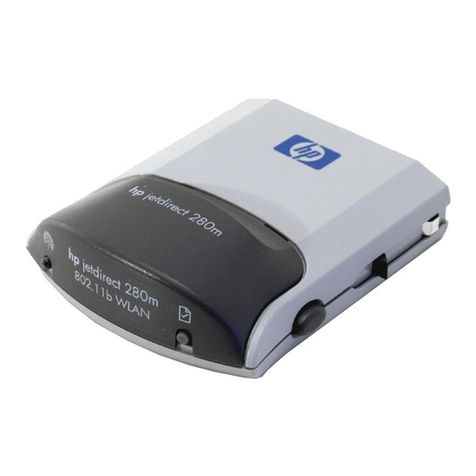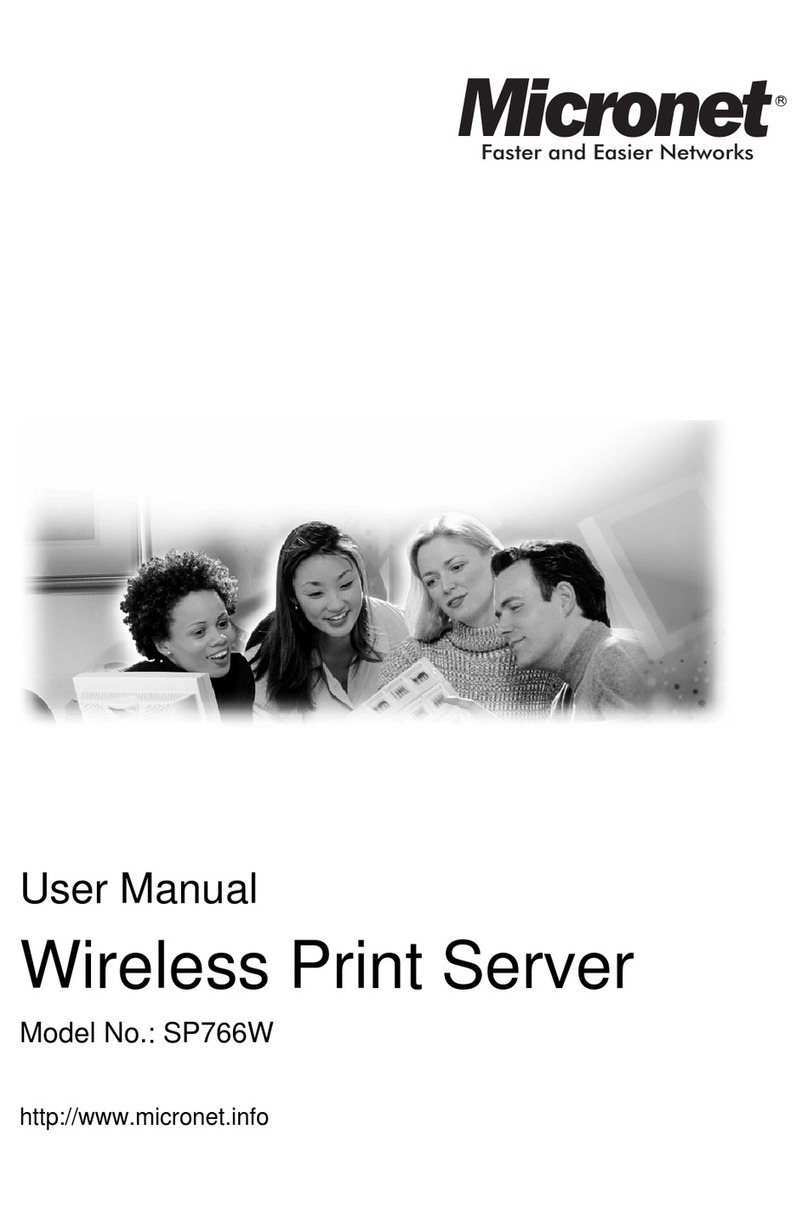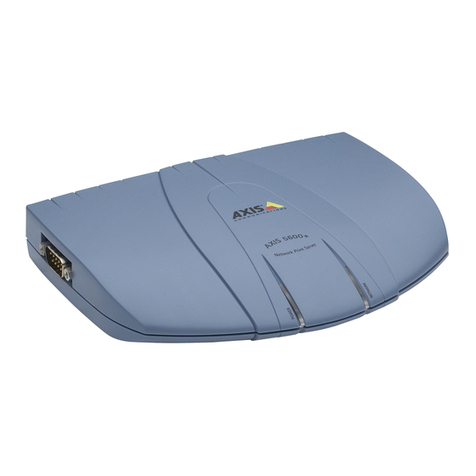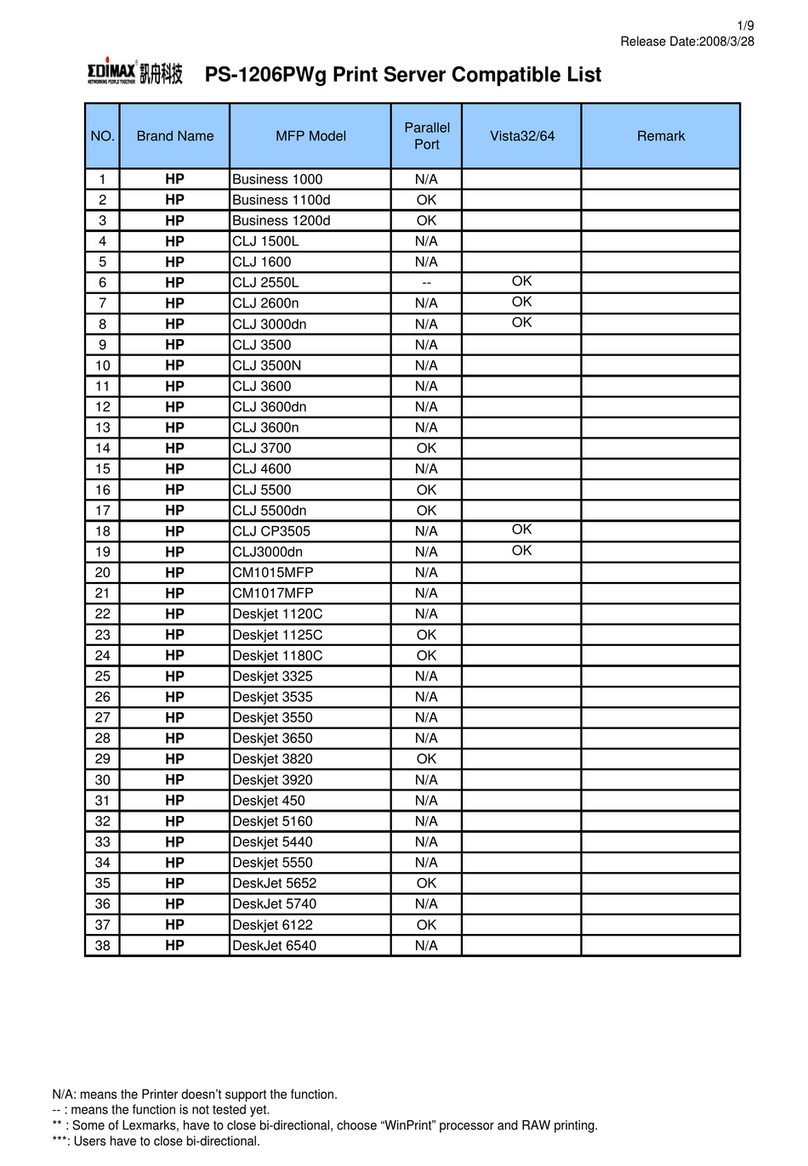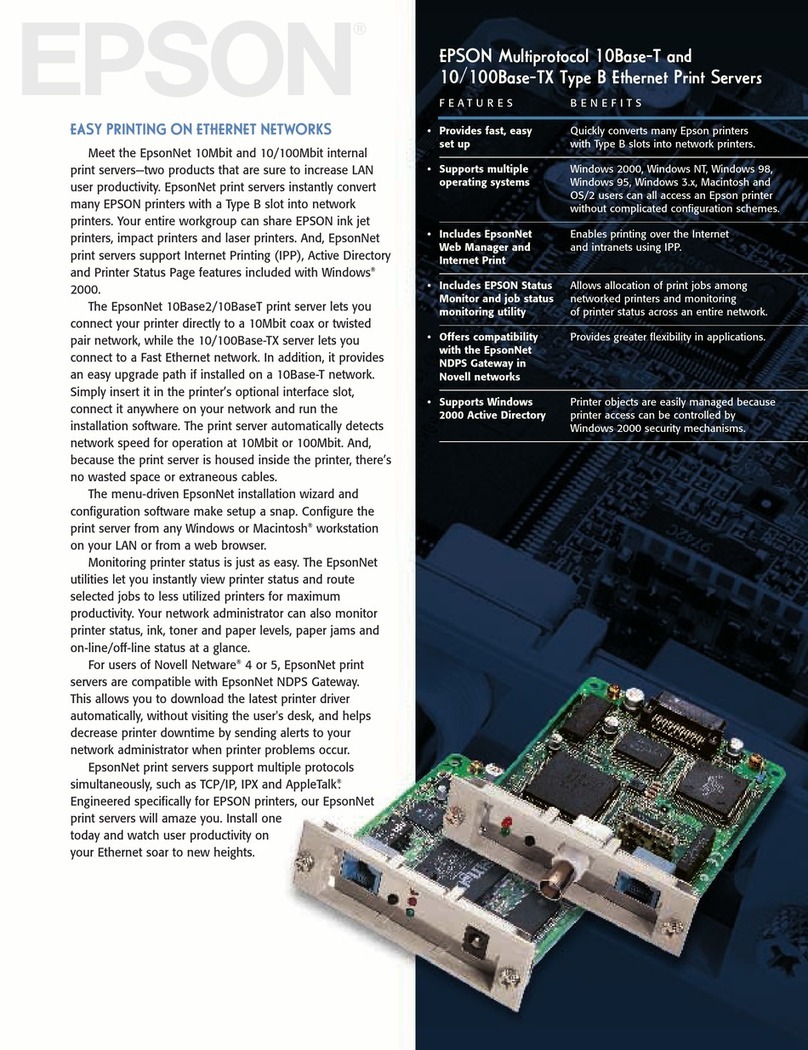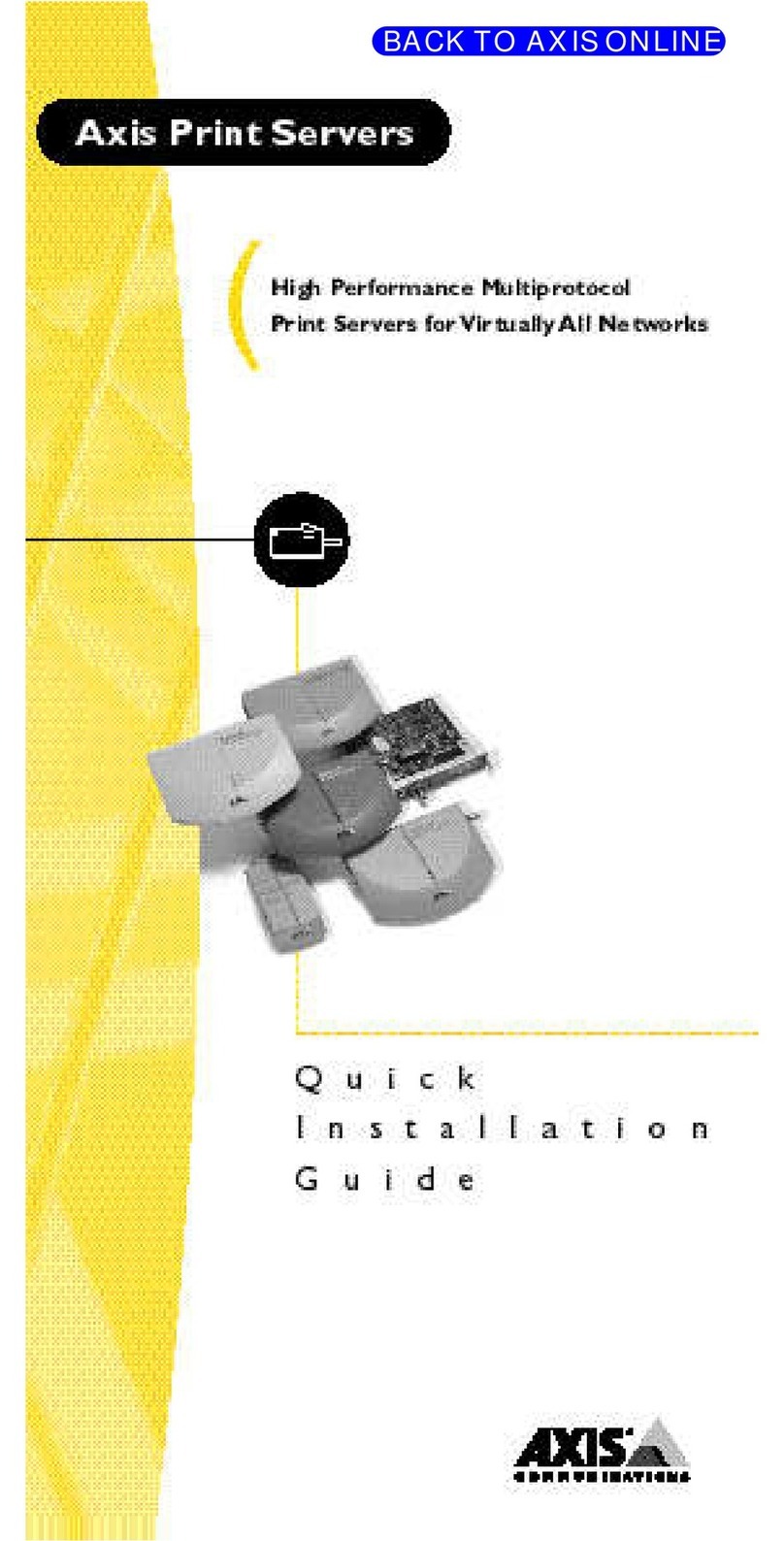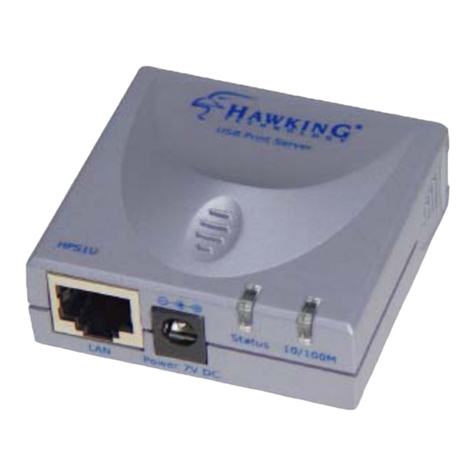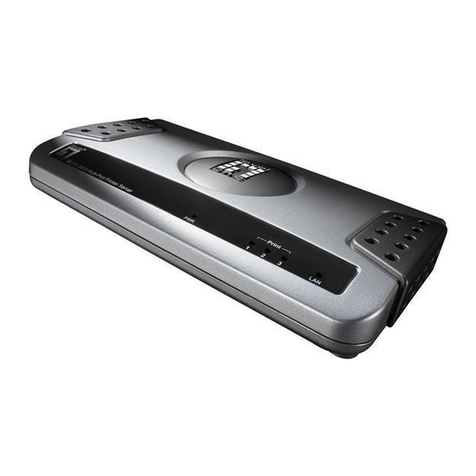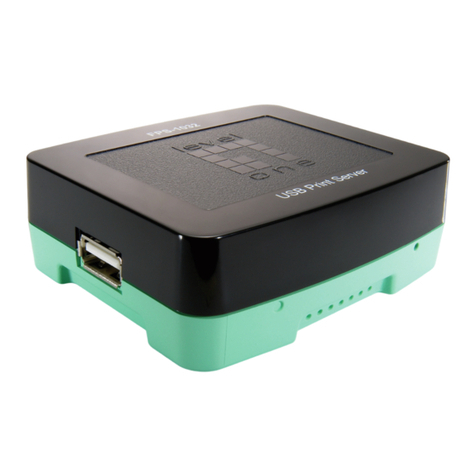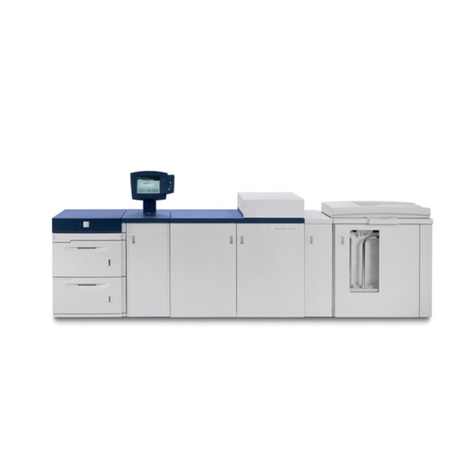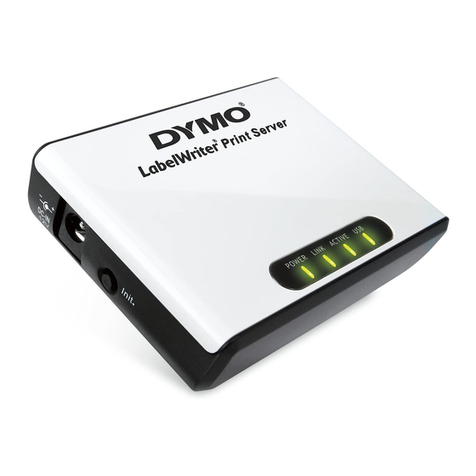
8
PP
PP
Poo
oo
oww
ww
werer
erer
er-up and Self-T-up and Self-T
-up and Self-T-up and Self-T
-up and Self-Testest
estest
est
Whenever the DP-101P+ is powered up, two kinds of testing procedures follow automatically. The first procedure
is just a programmed series of LED flashes, to confirm proper operation of the three LED indicators. The second
procedure comprises programmed tests of each of the DP-101P+’s major components. If any fault is found during
the component test series, testing is halted and a continuous pattern of LED flashes signals the nature of the
fault.
LEDLED
LEDLED
LED TT
TT
Test Seriesest Series
est Seriesest Series
est Series
Immediately upon power-up, all three of the LED indicators will show steady green for several seconds. Then the
LPT indicator will flash three times while Pw and Lk/Act remain steady. Irregularity of any of the LEDs during this
LED test series indicates that there is a problem with the LEDs themselves. Contact your dealer for correction of
any LED problems before proceeding.
ComponentComponent
ComponentComponent
Component TT
TT
Test Seriesest Series
est Seriesest Series
est Series
The actual component tests immediately follow the LED tests. A normal (no fault) result is signaled by three
flashes of the LPT indicator and the start of normal print server operation.
If any error condition is found during the component test series, then the test will halt with the LPT LED
continuously signaling the particular error according to the following table:
LPT Flash Pattern Error Type
Steady long flashes Firmware Reload Required
Continuous on DRAM Error
One long, two short flashes Timer INT Error
One long, three short flashes Flash Protected
One long, four short flashes Flash ID Error
One long, five short flashes Flash Erase / Program Error
One long, six short flashes LAN Controller Error
One long, seven short flashes LAN Memory Error
One long, eight short flashes Parallel Controller Error
One long, nine short flashes LPT Error
Steady short flashes EEPROM Error
One long, eleven short flashes LAN I/O Base error
